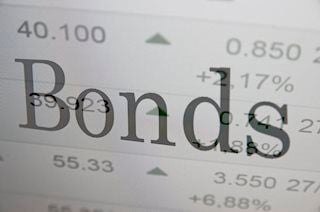US Treasury yields plunge as Fed holds rates, Powell hints focus on jobs market
|
- US Treasury yields drop following Fed’s decision to keep rates unchanged; 10-year note falls to 4.04%.
- Powell emphasizes job market importance, with July Nonfarm Payrolls report pivotal for future rate decisions.
- Market participants price in three rate cuts by year-end, as indicated by CME FedWatch Tool.
US Treasury yields along the short and long end of the curve plummeted late on Wednesday following the Federal Reserve’s decision to hold rates unchanged, as expected. The US 10-year benchmark note coupon sank nine and a half basis points to 4.04% following Fed Chair Jerome Powell’s remarks.
US 10-year benchmark note falls 9.5 basis points to 4.04% as market anticipates potential rate cuts
Yields advanced on the release of the monetary policy statement, which was widely perceived as slightly “hawkish.” Nevertheless, all changed once Powell hit the stands.
Powell said that the disinflation process “broadened” and acknowledged that the jobs market would be a crucial piece of the puzzle to reduce borrowing costs, not just inflation.
Following these remarks, Friday’s July Nonfarm Payrolls report will be a crucial piece of the puzzle as the Fed pivots towards becoming more concerned about employment.
When asked about discussions of lowering rates in the July meeting, Powell commented that officials discussed a July rate cut, but the majority opted to keep the federal fund's rates (FFR) unchanged at current rates.
Data-wise, US private hiring decelerated in July, according to the Automatic Data Processing (ADP) Employment Change report. Additionally, Building Permits improved following May’s plunge. Meanwhile, the Employment Cost Index (ECI), monitored by the Fed as a measure of inflationary pressures in wages, dipped in the second quarter of 2024.
Following the Fed’s decision, market participants had priced in three rate cuts toward the end of the year, according to the CME FedWatch Tool.
Fed FAQs
Monetary policy in the US is shaped by the Federal Reserve (Fed). The Fed has two mandates: to achieve price stability and foster full employment. Its primary tool to achieve these goals is by adjusting interest rates. When prices are rising too quickly and inflation is above the Fed’s 2% target, it raises interest rates, increasing borrowing costs throughout the economy. This results in a stronger US Dollar (USD) as it makes the US a more attractive place for international investors to park their money. When inflation falls below 2% or the Unemployment Rate is too high, the Fed may lower interest rates to encourage borrowing, which weighs on the Greenback.
The Federal Reserve (Fed) holds eight policy meetings a year, where the Federal Open Market Committee (FOMC) assesses economic conditions and makes monetary policy decisions. The FOMC is attended by twelve Fed officials – the seven members of the Board of Governors, the president of the Federal Reserve Bank of New York, and four of the remaining eleven regional Reserve Bank presidents, who serve one-year terms on a rotating basis.
In extreme situations, the Federal Reserve may resort to a policy named Quantitative Easing (QE). QE is the process by which the Fed substantially increases the flow of credit in a stuck financial system. It is a non-standard policy measure used during crises or when inflation is extremely low. It was the Fed’s weapon of choice during the Great Financial Crisis in 2008. It involves the Fed printing more Dollars and using them to buy high grade bonds from financial institutions. QE usually weakens the US Dollar.
Quantitative tightening (QT) is the reverse process of QE, whereby the Federal Reserve stops buying bonds from financial institutions and does not reinvest the principal from the bonds it holds maturing, to purchase new bonds. It is usually positive for the value of the US Dollar.
Information on these pages contains forward-looking statements that involve risks and uncertainties. Markets and instruments profiled on this page are for informational purposes only and should not in any way come across as a recommendation to buy or sell in these assets. You should do your own thorough research before making any investment decisions. FXStreet does not in any way guarantee that this information is free from mistakes, errors, or material misstatements. It also does not guarantee that this information is of a timely nature. Investing in Open Markets involves a great deal of risk, including the loss of all or a portion of your investment, as well as emotional distress. All risks, losses and costs associated with investing, including total loss of principal, are your responsibility. The views and opinions expressed in this article are those of the authors and do not necessarily reflect the official policy or position of FXStreet nor its advertisers.